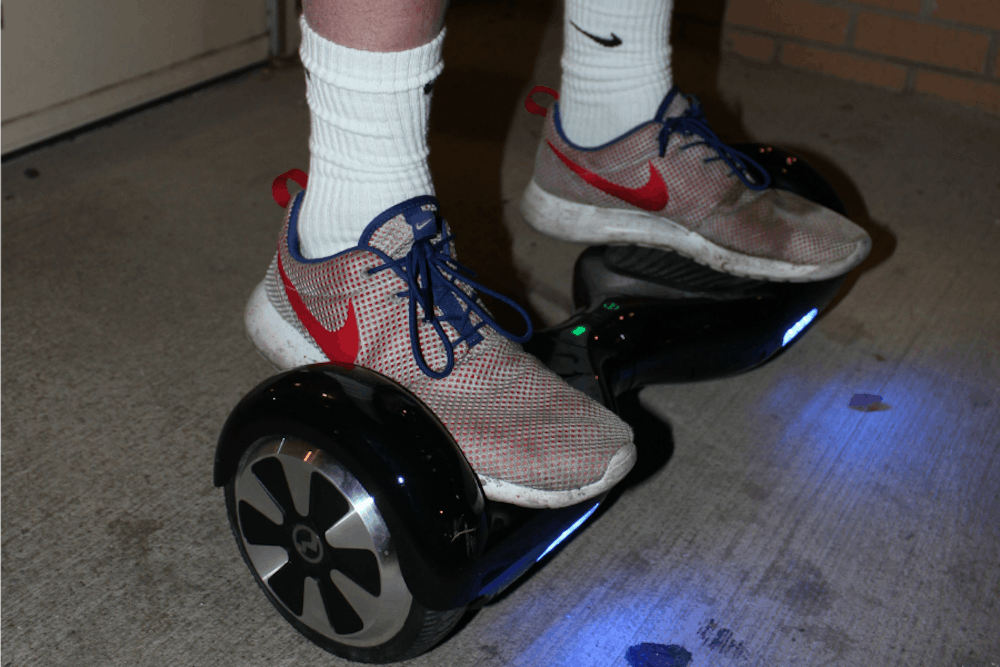By Maggie Callaghan, For The Miami Student
Move aside, bikes, there is a new mode of transportation sweeping Miami University's campus. It's called the hoverboard.
This electronic, two-wheel, hands-free segway has become increasingly popular in the United States, with celebrities like Wiz Khalifia, Justin Bieber and Cleveland Cavaliers player J.R. Smith seen riding around on one. It's also a growing trend around Miami's campus, particularly with student athletes.
"It's a lot easier to get home after a hard practice," said Chris Joyaux, defenseman for the Miami hockey team.
Joyaux said he ordered his hoverboard the second week of classes.
The hoverboard uses motion and weight senses to help the rider balance, according to the website for Swagway, the creator of the first hoverboard. Once the board senses that the rider is balanced, it will begin to move.
"It was pretty easy to get the hang of balancing, but I have pretty good balance from hockey and standing on skates," Joyaux said. "It was a little hard to get off though."
The original Swagway hoverboard uses a battery charge that lasts up to 20 miles, depending on the rider type, weather conditions and terrain. The Swagway company offers its product for $399.99 in seven different colors. It can go as fast 10 miles per hour.
But many Miami students don't seem to be convinced by this new trend.
"Although they may be fun to ride, has walking become such a burden that we would rather effortlessly hover to class? Maybe," said Michael Merullo, a sophomore.
Joyaux says he bought a Swagway hoverboard after trying out one of his teammates' boards. He says the Swagway offers easier transportation, good quality and is a lot more affordable compared to other hoverboards on the market.
Joyaux is one of five hockey players who own a hoverboard.
However, for other Miami students, the convenience for few has become an inconvenience to many.
"They do make it hard to walk
on the sidewalks sometimes, especially when two of them ride next to each other," said sophomore Elliot Narcross.
Although Joyaux insists he rides in the bike lane, that in itself presents a new safety concern, but there have been no recorded incidents on campus yet.
Similarly, with so many student athletes riding these hoverboards, their coaches have expressed concern, too.
Coaches from the hockey team warned players about riding around on the hoverboards. But Joyaux says the coaches actually tried it out, and after they rode on it, they understood why the hoverboards have become so popular.
And for the players, the convenience outweighs the risk of injury.
"I would consider myself pretty lazy and I like the convenience of them," Joyaux said. "I could get from point A to point B faster."
While some may have their opinions about the hoverboards and the student athletes that ride them, it is clear that those who ride them don't care.
"Hmmm, yeah I get a lot of looks. Some people think I'm arrogant, others think it's cool," Joyaux said. "I don't really care what other people think."
